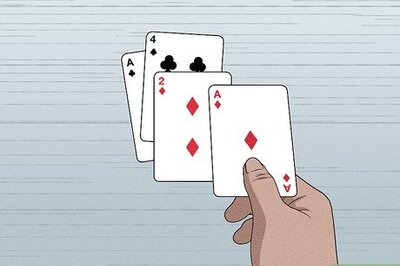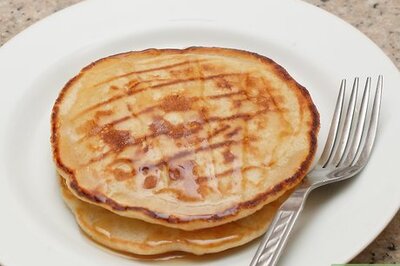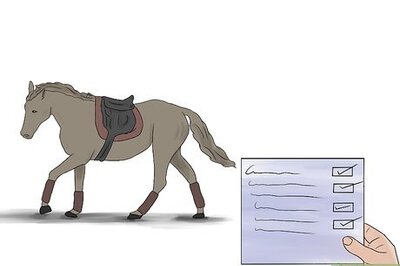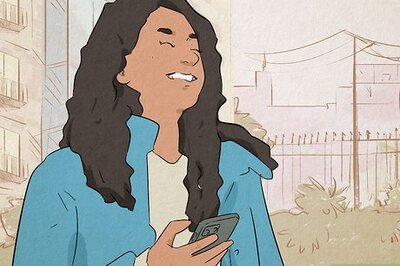
views
Waxing Crescent Emoji ???? Meaning
???? represents the 2nd phase of the lunar cycle, the moon, and outer space. The emoji shows the majority of the moon obscured in shadow with a crescent on the right edge illuminated by the sun’s light; this phase of the lunar cycle is called the “waxing crescent” phase and comes after the new moon (when the moon is totally dark). The ???? emoji also symbolizes nighttime, the moon, outer space, or astronomy in general. “The moon looks beautiful tonight ????” “When I was a kid, I was a total space nerd! ????????????”
The ???? emoji also symbolizes new beginnings, optimism, and the future. The waxing crescent phase is the start of the lunar cycle after the new moon, meaning the illuminated part of the moon will continue growing larger and brighter as it gets fuller. That’s why the ???? emoji has hopeful, forward-looking energy—it’s a reminder that life has cycles of ups and downs, and even though things may look dark now, brighter days (or nights) are ahead! “I love the energy at the start of a new school year! ????????” “I know the breakup hurts now, but things will get better! This is the start of a new and stronger you! ????????”
How to Use the Waxing Crescent Emoji ????
Use the ???? emoji to talk about anything moon- or space-related. If you’re in tune with the lunar cycle, send ???? to flaunt your astronomy knowledge whenever there’s a waxing crescent moon. If not, no worries—you can include ???? in any text or social media post about the moon, outer space, or even a fantasy or science fiction story that takes place among the stars. Try combining it with other outer space emojis to show your enthusiasm! “Omg I can’t believe I got to go on a NASA tour ???????????? Best vacation ever!” “There’s something so beautiful about a crescent moon ????????”
Include the ???? emoji in texts and captions about optimism or starting fresh. Since a waxing crescent moon symbolizes the start of a new cycle or new beginning, use it to talk about future plans or sticking it out through a tough time. You can use it if you’re trying to make someone feel better over text or include it in a social media post to spread enthusiasm to the masses! (Keep in mind that the symbolism may take some explaining since not everyone is familiar with the phases of the moon.) “Just take things one step at a time! All progress is good progress, no matter how small ????✨” “Taking a deep breath and starting fresh in a new town ????”
Post moon phase emojis to celebrate important dates in the lunar calendar. Many cultures around the world use the moon to know when certain holidays or celebrations occur. For example, the Muslim holiday of Ramadan spans the 9th lunar month of the Islamic calendar; since lunar months are shorter than solar months, this means Ramadan happens on different calendar dates each year and the moon is essential to knowing when it will be. If you use the moon to track any of your celebrations or important dates, you could include the corresponding lunar phase emoji in your celebratory posts or texts. For example, you could use the ???? emoji to symbolize the early days of Ramadan (since Islamic lunar months begin on the new moon), or the ???? (full moon) emoji to show you’re halfway through.
More Moon Emojis
There are emojis for each phase of the lunar cycle (and more). Take a look at your emoji keyboard—there are so many moons to choose from! Here’s a rundown of what each one means or represents: ???? (new moon, 1st phase of lunar cycle) ???? (first quarter moon, 3rd phase of lunar cycle) ???? (waxing gibbous moon, 4th phase of lunar cycle) ???? (full moon, 5th phase of lunar cycle) ???? (waning gibbous moon, 6th phase of lunar cycle) ???? (last quarter moon, 7th phase of lunar cycle) ???? (waning crescent moon, 8th phase of lunar cycle) ???? (crescent moon) ???? (new moon face) ???? (full moon face) ???? (first quarter moon face) ???? (third quarter moon face) ???? (moon viewing ceremony, traditional Japanese celebration in autumn) ???? (moon cake, Chinese delicacy and lunar symbol of mid-autumn festival)
Moon Emoji Creep Meme (Copy & Paste)
The moon emoji creep is a shadowy figure made out of the moon emojis. In 2018, Twitter (now X) user @yoripi_evolved posted an image of a strange figure made of all the various moon emojis, and the character spread quickly to become a popular meme. Users often post it with intrusive (but lighthearted) captions to make it seem like the figure is playfully butting into a conversation or situation (the original post was captioned “Excuse me…”). Copy and paste the moon emoji creep below to post it yourself! ????????????????????????????????????????????????????????????????????????????????????????????????????????????????????????????????????????????????????????????????????????????????????????????????????????????????????????????????????????????????????????????????????????????????????????????????????????????????????????????????????????????????????????????????????????????????????????????????
More Outer Space Emojis
There are enough planet, star, and alien emojis to fill the whole night sky. Besides the moon, there’s a whole host of other out-of-this-world emojis to give your texts and social media posts an extraterrestrial pop: ???? (ringed planet) ☄️ (comet) ???????????? (planet Earth) ☀️ (sun) ???? (sun with face) ⭐ (star) ???? (glowing star) ???? (dizzy, shooting star) ???? (Milky Way galaxy) ???? (alien) ???? (alien monster) ???????? (astronaut) ???? (rocket) ???? (flying saucer, UFO) ????️ (satellite)
The Phases of the Moon
The moon cycles through 8 phases about once every 29.5 days. The moon doesn’t shine light of its own, but reflects light from the sun. As the moon orbits Earth and Earth orbits the sun, we don’t get a continuous view of the side of the moon that’s facing the sun (and therefore lit up). Most of the time, our view of the moon shows part of the sunlit side and part of the dark side at the same time. How much of the sunlit side we can see determines which phase of the lunar cycle we’re in: New moon: The moon appears completely dark or black because the sun is illuminating the other side. Waxing crescent: We begin to see sunlight along the moon’s right edge as more of its surface is lit from our point of view. First quarter: The moon appears half full (it’s lit on the right side and dark on the left). Waxing gibbous: The moon appears more than half full as it approaches becoming a full moon. Full moon: The entire side of the moon facing Earth is lit. Waning gibbous: The right edge of the moon becomes dark as less of the moon is sunlit from our point of view. Third quarter: The moon appears half full (it’s lit on the left side and dark on the right, the opposite of the first quarter moon). Waning crescent: A sliver of sunlight can be seen along the moon’s left edge (the opposite of the waxing crescent moon). Did you know? The moon rotates on its axis at the same speed it orbits Earth due to the gravitational interactions between the two bodies. This means that from Earth, we always see the same side of the moon (or as they say scientifically, the moon and Earth are tidally locked).


















Comments
0 comment